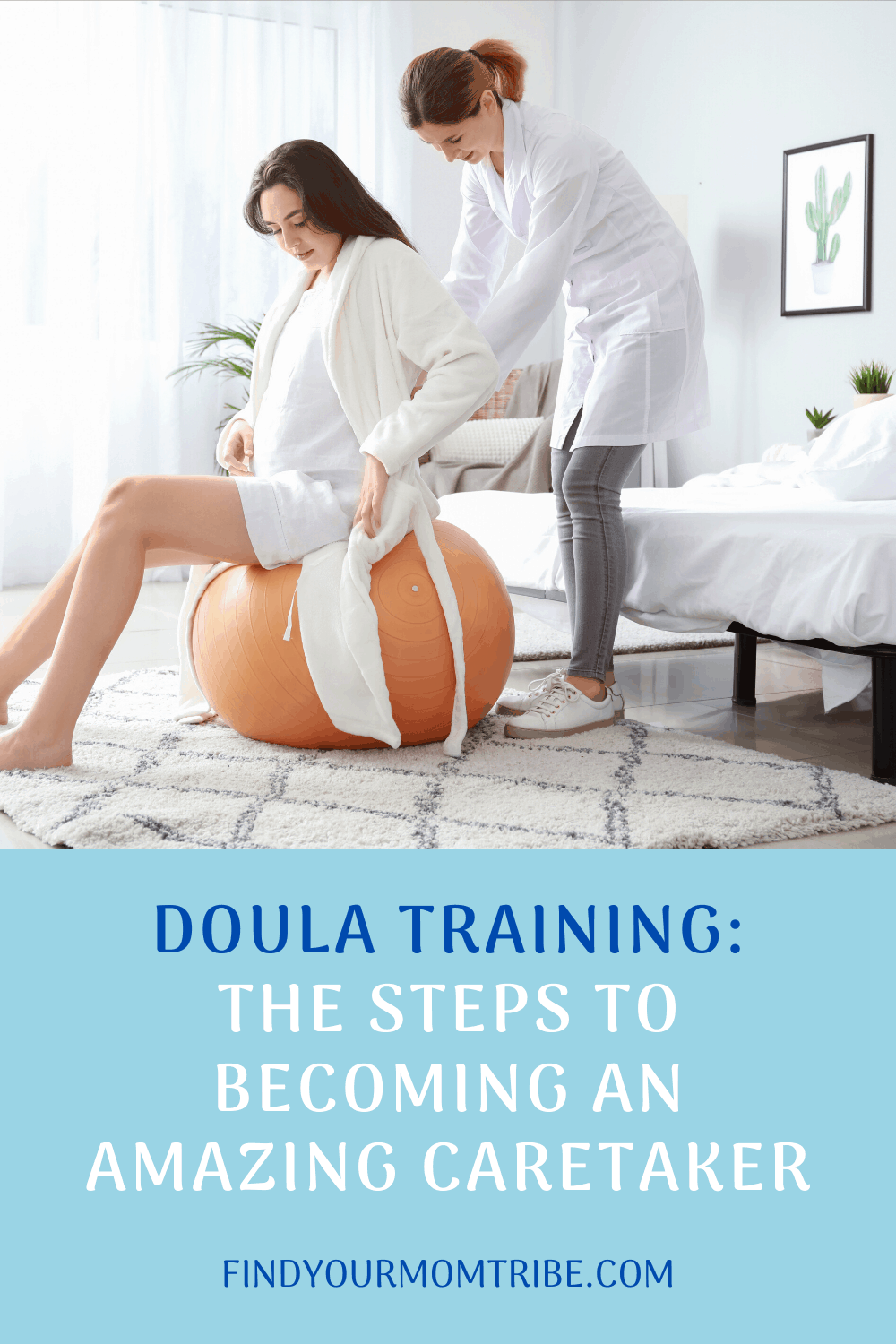People often ask me how I came to be a midwife, how one gets certified doula training, and if there is some kind of school for it.
So, I figured it was time to finally provide everyone with an answer I could just point them toward instead of having to explain it every time – at least for the doula part of my vocation.
One thing to clear up before I begin explaining the whole process is that doulas don’t provide medical care or any clinical advice.
A birth doula’s job is to simply provide emotional and labor support during the birth process so the mother can have an easier time.
Naturally, there’s more to it than that, and a birth doula isn’t the only kind of doula.

There is also a postpartum doula and her job is nearly the same, except she is there for the mother after the baby has been delivered.
It isn’t as hard as it may seem to get into but it does take a lot of dedication and training to actually become qualified.
I would not suggest the profession to anyone who doesn’t have nerves of steel and a level of empathy that can resonate with others.
I’m not trying to insult anyone here, but the fact is that these women need emotional support before, during, and after both their birthing and postpartum periods and as much as they might think they have it covered, they might be singing a whole different tune when they’re in the middle of it.
This is why a certain level of professional doula training is required.
How to get doula training?
The easiest and most approachable way to become a doula is through DONA International, a global organization dedicated to providing training for anyone wanting to go through the doula certification process.
They’re also arguably the most respected and acknowledged doula organization worldwide, with over 130 doula trainers globally so if you want to become one, they’re the way to go as a DONA approved doula will receive the same level of training as they do.

Plus, doulas who meet their certification requirements and manage to graduate from their training program end up having the option of making a decent living through this profession.
Each and every trainer is a certified birth professional and is capable of providing any new parent with quality childbirth education.
DONA International provides both birth doula training and postpartum doula training.
Both are somewhat similar in their process, but there are differences and I’ll explain how.
What does the birth doula training process entail?
As a birth doula you are required to go through a set period of different classes, from breastfeeding to childbirth education.
You are also required to bear witness to a number of deliveries so you know how the whole process goes.
I do hope you have the stomach for it as witnessing a cesarean delivery is not the most pleasant thing to look at, despite the fantastic beauty of childbirth.
Again, it’s not a vocation for everyone – only those who are really dedicated to the profession and share a love and passion for helping other moms while enduring a lot of stress from all sides.

The numbers vary depending on where one attends the birth doula training, but normally it takes about 9 to 11 hours of childbirth education classes, 18-ish hours of actual hands-on training as a birth doula, and about half a dozen witnessed births.
All postpartum and birth doulas also learn about cultural diversity, good manners, and maintaining a proper business ethic as they need to remain calm under pressure.
In case there isn’t a DONA certified doula trainer near you, you can always go for the distance learning option.
What does a birth doula do?
Well, the initial process begins when the expectant mother contacts you to organize a meeting.
The first few times you meet with her is what you’d call “the trial period”.
This is where the mother has to see if the birth doula is a fit for her, since their job is to essentially be a friend and an additional source of emotional support for them.
A professional friend if you would.
The birth doula will essentially be around the mother – well, not really around but at the ready when the call comes in – for most of the pregnancy (35+ weeks).

The exact length depends on when one is called upon and which week of pregnancy the mother is already in.
If you want to be one, you have to be ready to react at any moment in case an emergency pops up, especially during labor.
Afterwards, you’re there to provide emotional support all the way up until the delivery of the baby is done with.
Once everything is complete, the doula visits the mom a few final times to help get her settled and to answer some final questions about the start of motherhood.
This is where the postpartum doula takes over.
What does the postpartum doula training process entail?
On top of the things that a birth doula learns about, a postpartum doula undertakes some extra training because her job is just as important, if not more, since she needs to know how to take care of the needs of both the mother and the infant.
She has to be a caretaker for two people and help make the mother’s struggles easier.
This means that the doula has to finish at least 25 hours of postpartum doula education and prove her knowledge through assisting at least two or three women through their postpartum woes.
What does a postpartum doula do?
As previously mentioned, a postpartum doula takes over some of the tasks that the mother cannot manage to do due to the sudden amount of time and attention that she has to devote to her child.
This means that she’ll need to be able to perform the basic duties of a housewife such as cooking, cleaning, and any other chores the mother might be unable to do due to the time she has to devote to her newborn child.
This makes the role of the postpartum doula all the more important.

The amount of work a postpartum doula is required to do varies from household to household, but they should expect to have to do a lot.
On top of that, she is still there to provide emotional support and be a nonjudgmental guiding hand in the mother’s first foray into motherhood, to help keep her calm and sane throughout the entire process.
Postpartum doula’s are people the parents can vent to about their problems and people they can ask for guidance about some aspects of parenthood that they still do not understand.
As for how long a postpartum doula can spend in a household, it can last all the way up until the baby’s first birthday, so be prepared.
Is the training expensive? How well does it pay?
I wouldn’t really say that training is expensive.
The costs vary from $300 to $500 and the jobs one gets with them are usually paid quite well considering the initial investment, (an annual income of around 38-40k dollars which is above the national average, about $23 per hour).
This is especially true if a doula is DONA certified or similar as that tends to open a lot more doors and having a certificate usually instills a lot more trust and confidence.

If you’re looking to work in a more professional environment like a hospital, you’ll definitely need those certified credentials since they won’t just take anyone who claims they’re a certified birth or postpartum doula.
There are extra expenses on occasion, including additional certification fees, learning scripts, and added classes, but they shouldn’t amount to too much extra.
Is this the right job for you?
After reading all of this, this is the question you should be asking.
While the job might seem cushy and easy to get into, it requires a great amount of dedication.
It is tiring at times and will test your nerves often, since you’ll be interacting with a great number of different people who have elevated hormone outputs due to having recently given birth.
It might be grating at first and might lead you to quit, but once you understand it’s something they cannot really control and that every single woman undergoes the same exact process (any mother would), it’ll feel a lot better.
Plus, if you really have a passion for helping people, it’ll feel incredibly rewarding.
And, you’ll make a lot of friends this way, especially if you do a great job.
Like this post? Please share or pin it for later. You can also stay in the loop and follow us on Facebook, Instagram or Pinterest.

This post contains affiliate links. Please see our full disclosure for more info.

